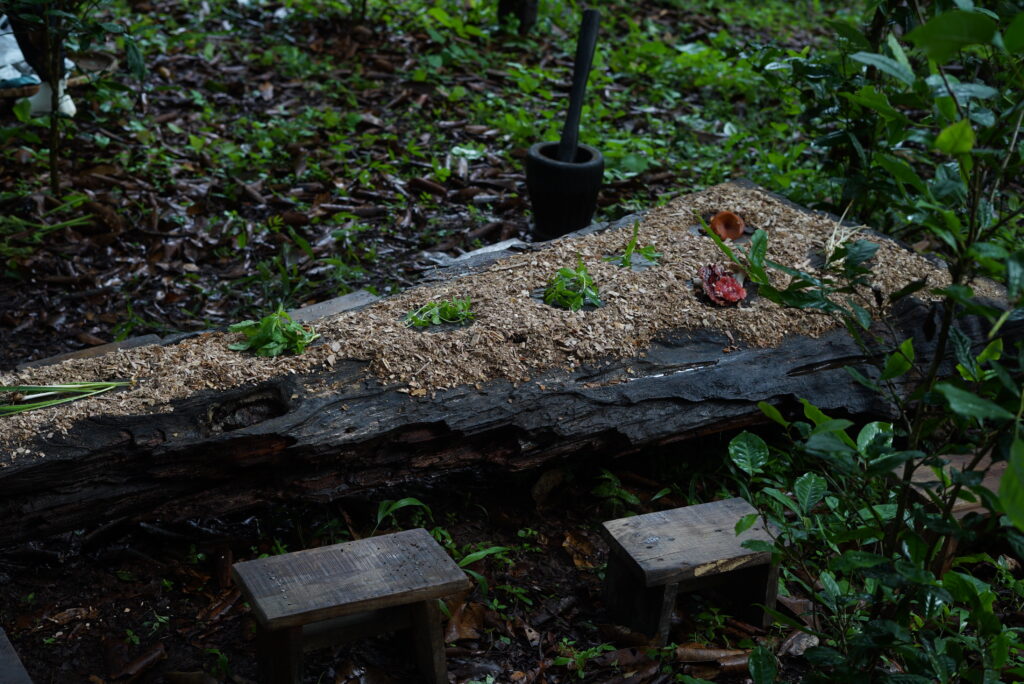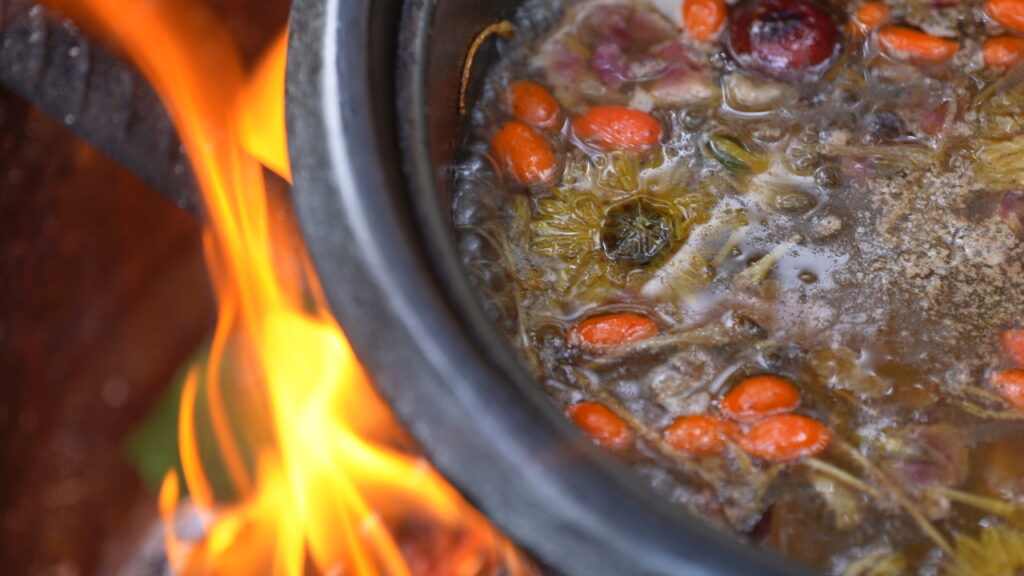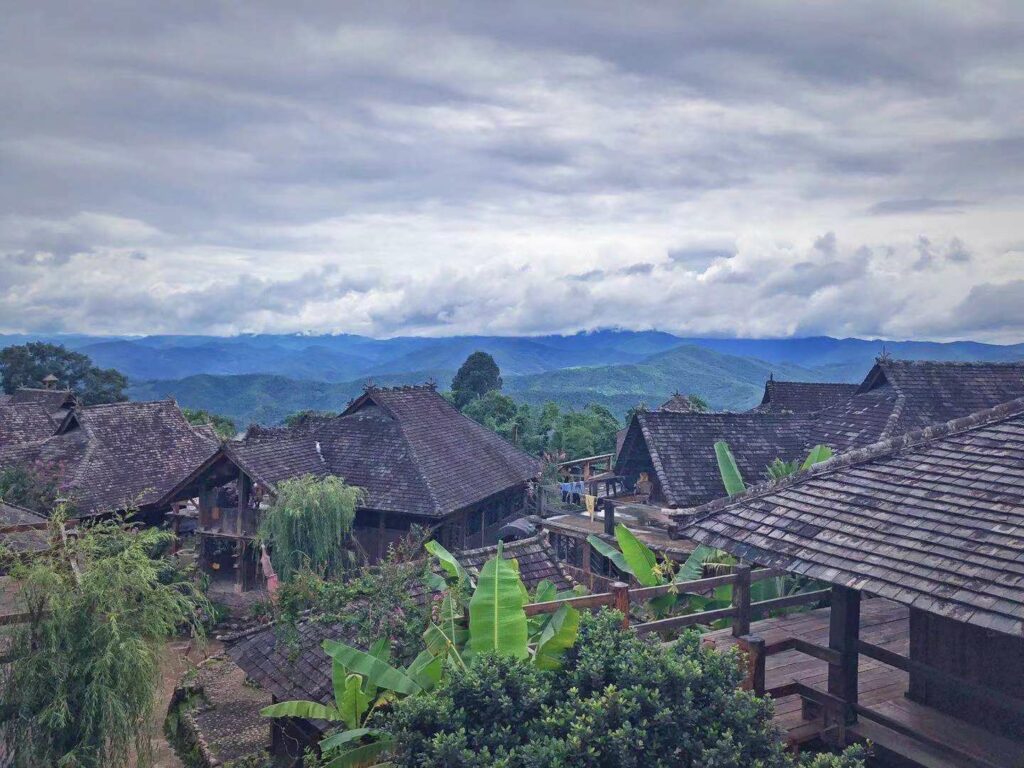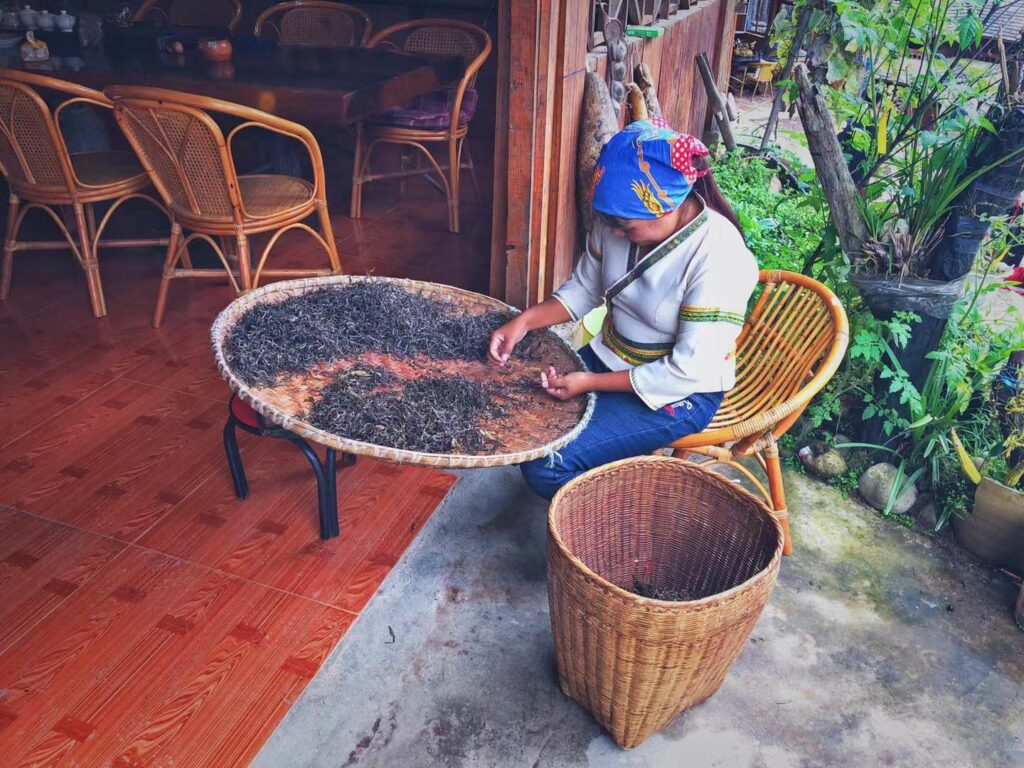
Art-based Approach to advocate traditional food biodiversity and ecosystem sustainability in the largest tea forest
Zeyuan Wang, Xiaohui Liu, Mengyao Ma, Tian Pan, Zhaluo Hu
(Good Food Fund China/University of Toronto)
Jingmai Mountain is located in Yunnan Province, China, and has the world’s largest, oldest, and best-preserved ancient tea forest. At the 45th World Heritage Conference in 2023, Jingmai Mountain’s ancient tea forest in Pu’er City was inscribed into the World Heritage List, marking it as the world’s inaugural tea-themed World Heritage Site. Mangjing Blang Ethnic Ecological Cultural Protection Area is an intangible cultural heritage in Jingmai Mountain. Indigenous Blang people have lived here for thousands of years and rely on tea forests for livelihood. Food biodiversity from the tea forest sustains the Blang people’s income, food security, and health. The Blang family always goes to the ancient tea forest mountains to gather tea and collect various wild foods as an important part of their diets. The Indigenous people use traditional knowledge to maintain and utilize biodiversity in Jingmai Mountain harmoniously for thousands of years. From 2021 to 2023, a research team from the Youth Committee of China Food System Action Hub conducted fieldwork and identified more than 200 traditional food ingredients and their medicinal functions, spiritual meanings, traditional cooking methods, and the influence of climate change. With the collaboration of the China Academy of Fine Art, the team and the Blang people co-designed an innovative playlet to advocate traditional knowledge, foods, and biodiversity. The documentary of the event was used to explore how to use fine arts for sustainable food system transformation education. The results have been exhibited in art exhibitions twice in China.
However, in recent years, several regions in Yunnan, including Jingmai Mountain, have been experiencing high temperatures and drought conditions. The desire to plant more tea for higher income and the challenges for traditional knowledge transition have become barriers to sustainable development. We believe that efforts should be made by national governments, local authorities, researchers, and international organizations, including enhancing regulations, implementing enforcement, fostering interdisciplinary collaboration, to strengthen the public impact of academic research, advocate for the inheritance of traditional knowledge and cultural beliefs, prevent overplanting of tea, and protect and rationally utilize local resources and biodiversity food ingredients to sustain livelihoods and economic growth, thus mitigating climate change, reducing its impact on local communities, achieving mutual human and natural health, and promoting sustainable development. This case brings a new paradigm to local research and holds significant reference value for other tea planting areas and the impacts of climate change in countries and regions such as China, Myanmar, and India.

An art-based approach for sustainable food system education in the tea forest (Place: Jingmai Mountain; Credit to: Tian Pan)

Indigenous food biodiversity from the tea forest (Place: Jingmai Mountain; Credit to: Tian Pan)

Co-creating a new menu (black tea hot pot) based on Indigenous food biodiversity (Place: Jingmai Mountain; Credit to: Tian Pan)

A traditional Blang Village (Place: Jingmai Mountain; Credit to: Zeyuan Wang)

A Blang woman processing the tea (Place: Jingmai Mountain; Credit to: Zeyuan Wang)
Acknowledgement
We appreciate the support from Good Food Fund China and professors and students from the Chinese Academy of Fine Art who contribute to this project.


